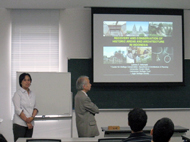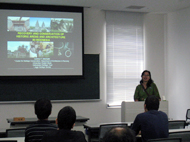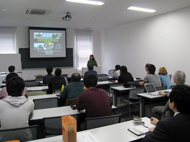Events
Recovery and Conservation of Historic Area and Architecture in Indonesia
Date: May 29, 2009
Venue: Room 172 (C1), Katsura Campus, Kyoto University, Japan
Organized by:
Kyoto University Global COE Program "Global Center for Education and Research on Human Security Engineering for Asian Megacities" Urban Governance Group
Number of attendants: 25
Poster
Report 046
Outline
The workshop in the Global COE program Urban Governance Group was held at Kyoto University, Katsura Campus C-cluster, Room C1-172 on May 27th, 2009. We invited Laretna T. Adishakti, who received the 14th Nikkei Asia Prize in culture class for spearheading a campaign to protect the former royal palace district in Yogyakarta, and asked her for a keynote lecture about her activity. The purpose of this workshop is to share information and have a discussion for the research exchange in the future.
Report
Indonesia has diverse cultural heritages, but is one of the most quake-prone countries in the world since it is located on the circum-Pacific orogenic belt.
Therefore, these cultural heritages are always in danger of being afflicted by earthquakes and other natural disasters. However, the disaster prevention measures are not good enough in Indonesia. The recent earthquakes, which hit Indonesia, caused extensive damage to many cultural heritages.
In order for the sustainable conservation of these cultural heritages, not only the disaster risk management but the heritage conservation and management corresponding to the times and environment would be necessary. Also, conserving immaterial heritage as well as material ones is important.Dr. Laretna pointed out from her activity in Kotagede and Imogiri that energetic activity by local residents is necessary and that information sharing and disaster prevention education make it possible.
She said, "Disaster is a catastrophe. However, it can be an opportunity. In the opportunity, creativity is necessary. And creativity needs cooperation," and emphasized that it is important for the whole community to recognize the problem and to be involved in conservation activity as one, and that the heritage conservation should be in part of the daily activity.
In the discussion after the lecture, there was a meaningful exchange of opinions among the participants. The discussion was mainly about the balance between conservation and alteration and the law concerning the matter.
Deeper discussion was held about the real folk heritage, which should be conserved. The occasion became a good opportunity to share the visions for the future of this program.



